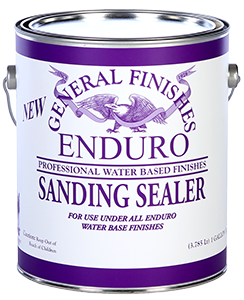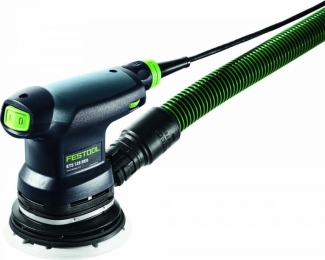

The most critical part of finishing a piece of furniture happens before you open a can of stain or paint - it starts with the sanding. Sanding is critical to creating a smooth surface. Use the following sanding sequences for new wood:
For wood that is going to be painted, use 120-grit, followed by 150-grit.
Although both items are labeled as 220-grit, the pads are softer with a less aggressive scratch pattern.
With use, a 220-grit pad will soften very quickly to the equivalent of 400-grit sandpaper - making used pads ideal for finish sanding between layers of topcoat or prep sanding an EXISTING finish.
220-grit sandpaper is too aggressive for finish sanding but works well for the final round of prep sanding of open-grained raw wood such as Cherry, Pine, Maple, Birch, or Alder.
It is normal to see a bit of stain on the brush when applying the first coat of topcoat. Topcoats often pull a bit of color on the first pass, but good preparation will minimize this.
To prepare open grains woods such as raw Oak for a water-based stain, we recommend sanding with 180-grit followed by no more than 220-grit sandpaper.
Finish sanding is the process of sanding between or before the final coats of topcoat. There are several options.
Be careful about just using numbers. For instance, the 220 grit sanding PAD is equivalent to 400 grit SANDPAPER. Sanding pads from different brands have similar names but different grits. Also a note on sanding pads - we like to abrade new ones a bit on raw wood and not use them straight out of the box. Used 220 sanding pads are perfect for that final sand before topcoat.
Wood finishing is fun and easy. Don't rush through finishing a piece of furniture as if it is a race. Imagine how it will look finished in your home in living color. Set up a good prep area. Turn on some tunes. Get creative and enjoy the journey.
Vinyl or paper veneers can be often found on the end returns of lower price-point cabinets. We cannot guarantee that our paints will adhere well to a paper veneer - we have no idea what the actual material is or what adhesives were used to apply the veneer to the surface. The resins and additives in our paints may break down the adhesives used for the veneer.
And Milk Paint does NOT adhere to vinyl.
GF advises extra care and prep when applying any finish over laminate surfaces because they are specifically designed not to mar and therefore they are not very "sand-able", making adherence difficult.
In addition to this non-permeable surface factor, General Finishes Gel Stain is an oil-based product, and it is more difficult to obtain proper drying characteristics over a dense manufactured surface such as laminate. Gel stains, as all wood stains, were formulated to go over raw wood which has an "open" surface and can absorb some of the stain.

There are four benefits to using sanding sealer as the first seal coat prior to topcoat
John Mosconi of Sting King Lutherie in Akron, Ohio takes us on his journey of refinishing this mandola.
Step 1: Prep and Sealing

GF's recommendation: (there are other great sanders in the market. These are the ones we are familiar with) Most pros own more than one sander as they are designed for different objectives.